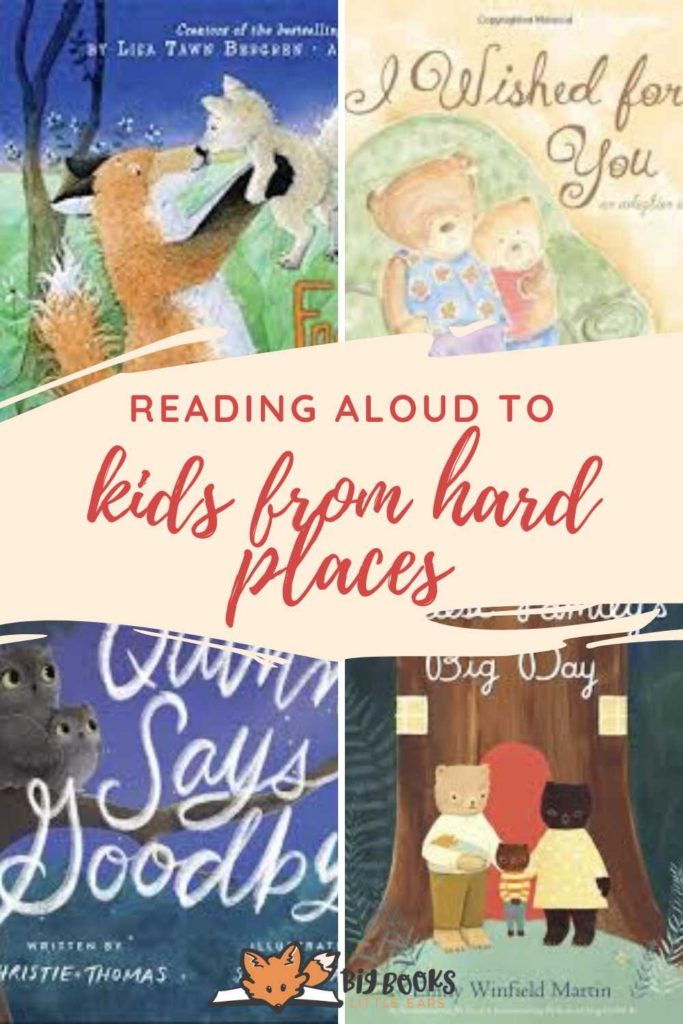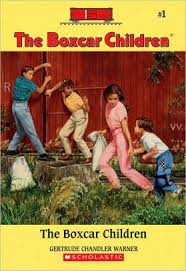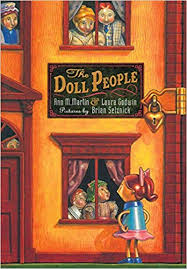“Kids from hard places,” is the term used by many professionals to describe children who have had some sort of trauma in their lives. Childhood trauma effects everything, even how children listen during read aloud time.
In order to help kids from hard places, like children in foster care, it’s important to be trauma informed. Their brains work a little bit differently because of their life experiences, so keeping that in mind helps everything go better. Being trauma informed isn’t just for foster parents, but for anyone who loves them, like church leaders, and babysitters!
I became more trauma informed from the many classes and books about trauma that my husband and I have read over the years, and our own experiences with kids from hard places. We were never foster parents, but we did provide respite care for foster families for four years. We had lots of foster kids stay in our home over the years, anywhere from a few hours, to a few weeks.
It was great for our family to serve foster families in this way, and our kids loved having other kids to play with. Also, it was super-ridiculously hard sometimes, and those four years of providing substitute care gave me an undying respect for foster families!
Becoming trauma informed helped me figure out how to successfully (most of the time) incorporate read aloud time with the kids who stayed with us. These are my top tips for reading aloud, along with links to some good book lists.
If you are already a trauma informed parent, these tips could be a great list to send to caregivers, church members, or other family members who could use more information about loving kids from hard places.

6 Tips for Reading to Kids With Trauma
1. Assume you are starting from point zero
One time we had an older child stay with us, and I put on an audio book for the kids to listen to while they did crafts. He had absolutely no idea what it was, and told me I was stupid for not putting the CD in the DVD player so they could watch the pictures with the sound.
Just assume you’re starting from the absolute beginning when it comes to reading aloud or introducing books.
Please, PLEASE, don’t act surprised when kids from hard places don’t know about certain classic books, or even how to behave when you’re reading to them. Acting like they should know what you’re talking about only reinforces to them that they’ve missed out, or signals to them that there’s something wrong with them because they don’t know this stuff.
Instead, just assume they have never been exposed to reading aloud or picture books at home.
2. Clearly explain how reading time will go
By clearly explaining what happens at reading time and what is expected, you can help set the kids up for success. And, seriously, you cannot get too detailed in this.
For example, I would tell some of the sibling sets we had stay with us, “Everyone may choose 2 books. I will read them in order from youngest’s choice to oldest’s choice. If there is something to feel on the page, I will bring the book to you, you don’t need to reach. I’ll start with the oldest to feel it first, then work down to the youngest. If you sit and listen to the books, then you can have your lovey heated up in the drier before bed!”
This way everyone already knows that they will get a turn, they don’t have to scream that they want to go next, and they know that there’s something in it for them.
Didn’t always work like that, but it definitely helped!
3. Rock while reading aloud
Rocking is great for kids of all ages! It is one of those universally soothing actions.
Get creative with this. Rock in a comfy rocking chair together. Let the child sit in a small rocking chair that you gently rock while you read.
Porch swings are great! Or normal swings on the swing set, blasting an audio book from the top of the slide. Or a hammock. Or just sway in rhythm while you read.
Any of these soothing practices can help.
4. It is very difficult to predict what will trigger a child
You will eventually figure out what types of books trigger bad feelings, outbursts, or fear in a child in your care. And then it will change again.
It’s just very hard to know what will trigger a child. Sometimes you’ll think something like, “Oh, I need to avoid anything that hints at losing a parent!”
Then the child will announce, “The Boxcar Children is my favorite book!”

Your best bet is to ask the other people in your child’s life if they have any insight, let the kids’ preferences guide your book choices frequently, and read books that help the child have words for what they’re feeling. (I have a few picture books that I recommend specifically for when a foster child is transitioning into or out of a home.)
If you decide to read aloud a longer chapter book, preview it first. I have provided this step by step guide to teach you how to preview a chapter book you want to read aloud.
5. Age does not correlate with listening ability
I have become sort of infamous for introducing chapter books very early on with my kids, and encouraging other moms to try it, too. (Although we still have a healthy amount of picture books in our reading time, too.)
However, I do not recommend ever rushing into longer books with kids who aren’t ready for it. Reading is supposed to be about enjoying time together and opening up good dialogues, and you can’t do that if you choose a book far above the kids’ listening abilities!
So, take it slow, and stick with picture books way longer than you feel like you “should.” If you do want to throw in a chapter book, don’t stress if it doesn’t work out. And try one of these books I recommend for families with a large age spread. (Although, not all of them will be right for all families! Preview, always.)

6. Repetition, Repetition, Repetition
All kids love to hear the same story over and over and over again. You may have noticed that with your own kids when you read Hippos Go Berserk so many times that you can now quote it. (1 hippo, all alone, calls 2 hippos on the phone!)
This is especially true of kids from tough places who have experienced some trauma. If you’ve read any books on trauma then you know what I’m talking about – they like the familiar, and repetition is as familiar as it gets!
One time we had a sibling set stay with us for a few weeks, and I let them each choose two books to read before bed. Every night for WEEKS, both kids chose the exact same book…for both of their choices!
So what did I do? You better believe I read that book 4 times every night! Why not, you know?!? Embrace the repetition, and the little jolt of the happy familiar that their brain gets!
You can read to foster kids
The fact that you read all of the way through this article shows that you want to help kids from hard places. Thank you for taking into account the way their brains work as you choose picture books for foster kids and how you read to them! And keep reading!

